Kyoto Events in September 2023
In Kyoto, September is a vibrant time when the city comes alive with numerous festivals and events, offering a wonderful opportunity to immerse oneself in Japan’s rich traditions and cultural heritage. As the summer season draws to a close, the city gears up to embrace the beauty of autumn while paying homage to age-old customs and rituals.
| Date | Event | Category |
|---|---|---|
| September 9th | Chōyō no Sekku | Festival |
| September 15th | Kiyomizu-dera’s Seiryū-e: The Blue Dragon Festival | Festival |
| September 15th | Yoshitsune-sai | Festival |
| September 16th-18th | Hagi Matsuri | Festival |
| September 21st | Kamigyō Takigi Nō | Festival |
| September 25th | Kushi Matsuri – The Japanese Comb Festival | Festival |
| September 29th | Meigetsu Kangen-sai | Festival |
| Early to Mid September | Kangetsu no Yūbe (Moon Viewing Party at Daikakuji Temple) | Festival |
With an abundance of festivals and events in September, Kyoto provides a perfect backdrop for immersing oneself in the traditions, culture, and natural beauty that define this enchanting city.
Kiyomizu-dera’s Seiryū-e: The Blue Dragon Festival
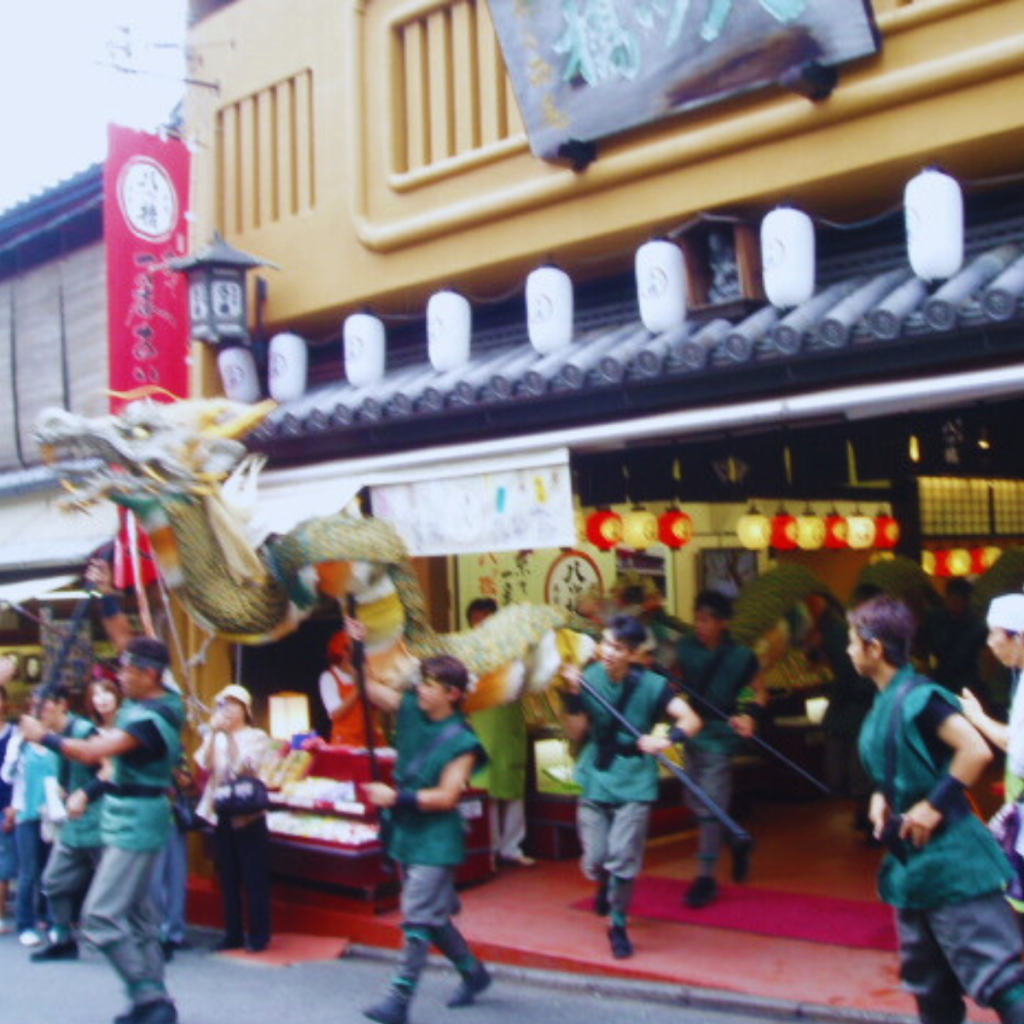
Date: September 15th, 2023
In September, Kyoto celebrates tradition and culture with various festivals and events. One of the highlights of this celebration is the relatively new Seiryū-e, also known as the Blue Dragon Festival. Established in 2000, Seiryū-e honors the divine god-beast, Seiryū, responsible for guarding Kyoto’s eastern border against misfortune and disaster.
Honoring Seiryū: Protector of Kyoto
Seiryū is considered one of the four divine god-beasts said to protect Kyoto’s borders. Ancient legends tell stories of a dragon visiting Kiyomizu-dera, nestled at the base of the eastern Higashiyama mountain range. This dragon would drink from the sacred Otowa no Taki waterfall on its precincts.
According to local beliefs, Seiryū is an incarnation of Kannon, the Buddhist goddess of mercy and compassion. With Kiyomizu-dera as its base of operations, Seiryū plays a significant role in this cultural event.
A Parade Through Tradition and Fashion
Organized by monks from Kiyomizu-dera and members of Monzen-kai shopping street group, a dynamic procession takes place during this festival, starting from temple grounds and parading through the neighborhood before returning.
The large sutra-covered dragon created for this event was designed by famous costume designer Emi Wada (known for her works in “Ran,” “Hero,” and “House of Flying Daggers”), with support from Kyoto’s traditional craftspeople.
Members participating in the parade dress in a mix of classic Chinese and Japanese costumes that showcase both tradition and modern fashion. They carry the dragon through a designated route from 2 pm until 3:30 pm.
The Performance to Ward Off Misfortunes
As the parade moves along its route, Tenbōshū musicians sound their conch shells while Tengujisha priests cast holy water. Meanwhile, warriors hold their weapons, men representing sixteen divinities chant, and pole bearers guide the dragon to survey its territory and protect its believers.
The colorful dance/procession at the beautiful Kiyomizu Temple features the “Blue Dragon” (which is actually green but often referred to as blue in Japanese). According to one of the legends of the temple, every night, a blue dragon – or Seiryū – flies in to drink from the Otowa waterfall situated beneath the temple’s main hall.
The procession also pays tribute to Yasha, originally a demon-god enshrined in a small shrine located south of the Okuno-in Hall. Yasha has been worshipped as a match-making god who guards Seiryū and serves as a disruptor of evil karma.
During the event, an 18-meter long figure representing Seiryū leads the way. Performers donning gorgeous costumes parade through temple grounds and town, praying for regional peace and expelling bad luck.
As attendees observe Kannon’s incarnation performing, they chant “Namu-kannon” in unison and pray for good fortune.
The Seiryū-e Blue Dragon Festival offers locals and visitors alike an opportunity to witness a unique blend of tradition and modernity found only in Kyoto. This vibrant September event encapsulates culture, mythology, and artistry while fostering a sense of community as people gather to honor Seiryū’s protective powers over the city.
Chōyō no Sekku

Date: September 9th, 2023
The Significance of the Number Nine and its Cultural Connection to Japan
Certain numbers hold significant meaning in Japanese culture, just like in the West. One such number is nine, believed to be an auspicious number by the Shinto religion. This belief drives Kamigamo Shrine in northern Kyoto to host the Chrysanthemum Festival (Chōyō no Sekku) on the ninth day of the ninth month, which falls on September 9th.
Chōyō no Sekku: A Day of Rituals and Traditions
During the festival, Saiō-dai, a woman chosen to represent an imperial princess at the famous Aoi Matsuri, makes her appearance. She dons a multi-layered kimono and classic hairstyle and is accompanied by young attendants. The festival’s attendees can drink chrysanthemum sake while witnessing a unique ritual where priests from Kamigamo Shrine perform a prayer dance, mimicking crows as part of their celebration.
Crows hold special significance at Kamigamo Shrine because of the legendary three-legged yatagarasu who led the first Emperor. Once the ceremonial portion concludes, it’s time for local children to dive into karasu-zumo or “crow sumo,” a popular sumo wrestling competition.
The History and Importance of Chrysanthemums in Japanese Culture
Chrysanthemums have been cultivated for medicinal and culinary purposes since ancient times in China. They made their way into Japan around the Heian period (794–1185). Chōyō-no-sekku, one of China’s five Sekku or seasonal festivals, is observed on September 9th. It celebrates chrysanthemums’ medicinal properties that promote good health and longevity.
In East Asian cultures, tradition runs deep when it comes to ascribing certain numbers and dates with auspicious or inauspicious qualities. Behind this belief is the balance of Yin (negative) and Yang (positive); odd numbers are associated with Yin, while even numbers denote Yang. People consider these relationships when scheduling celebrations like weddings and even naming their children.
The Japanese holiday Chōyō no sekku, also known as the Double Ninth Festival, occurs on the ninth day of the ninth month. The focus on number nine signifies an excess of Yang, creating an atmosphere of imbalance that transforms into an auspicious occasion through ritual and prayer.
Chrysanthemum: A Symbol of Youth and Longevity
As an autumnal flower symbolizing youth and longevity, chrysanthemums hold a special place in Japan’s Chōyō no Sekku. Celebrations include displays of fresh-cut chrysanthemums and arrangements featuring chrysanthemum-themed arts and crafts. Women often wear kimonos with chrysanthemum designs to signify good fortune.
Legends say that the dew of a chrysanthemum can grant immortality. During the Heian period, aristocrats wiped their faces with dew-soaked cloths to pray for a long life. This tradition continues today, as bundles of silk thread are placed on chrysanthemum flowers on the eve of Chōyō no sekku to absorb the dew and fragrance overnight.
Attendees use these bundles to wet their faces as a prayer for good health or as fragrant decorations for their homes. The event is further celebrated with Kikuzake, chrysanthemum-infused sake, served in elaborate lacquer or ceramic cups alongside prayers for good fortune throughout the fall and winter months.
Kangetsu no Yūbe (Moon Viewing Party at Daikakuji Temple)
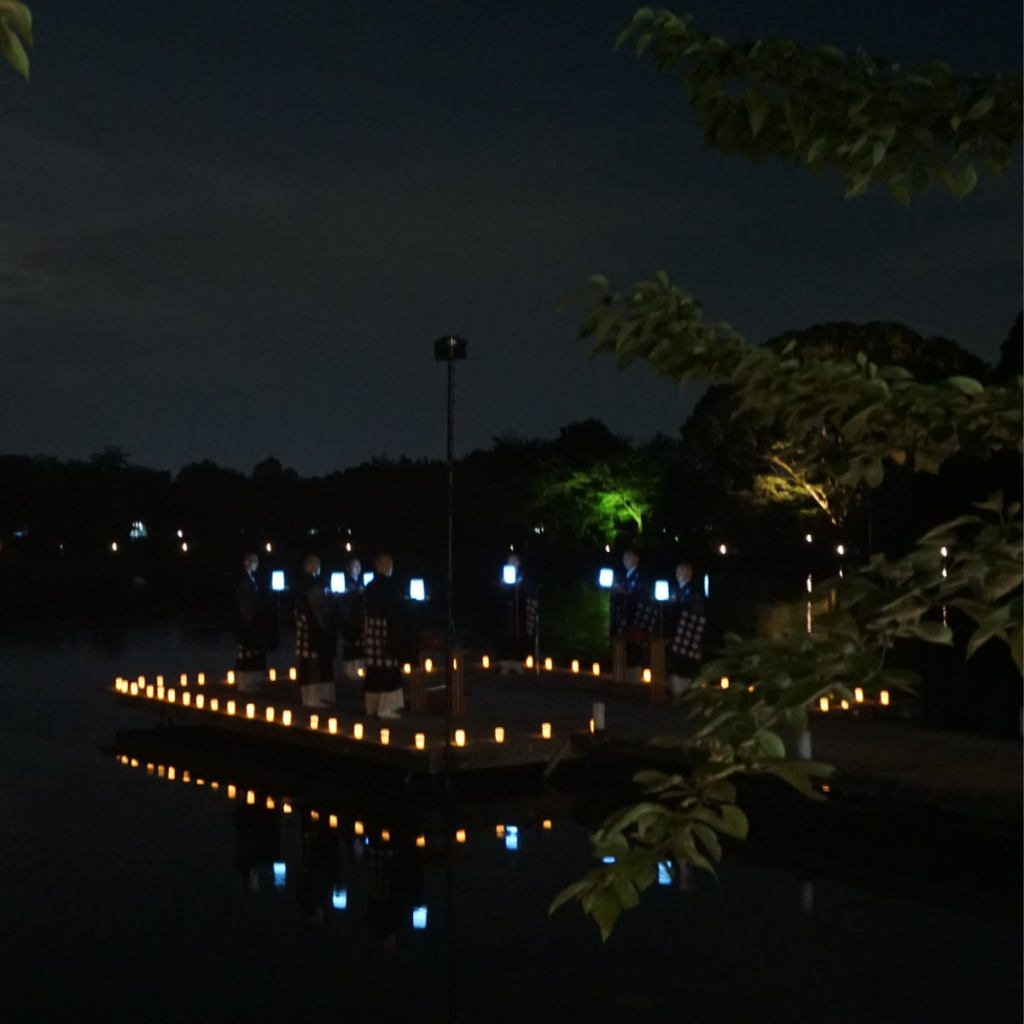
Date: Early to Mid September 2023
The Heian Era Tradition Continues in Arashiyama
The vast Daikaku-ji Temple precinct is north of Kyoto’s Sagano district. A full moon viewing party known as “Kangetsu no Yube,” celebrated annually on the night of the mid-autumn harvest moon, is held on the Osawa pond to pray for an abundant crop and the people’s happiness. The event is popular among not only Japanese locals but visitors from other nations as well. During the Kangetsu no Yube event, you can experience ancient Heian era traditions while gazing out at the moon and floating on boats around the gigantic pond.
Access to Daikaku-ji Temple for Moon Viewing Party
Getting to Kangetsu no Yube and Daikaku-ji Temple is quite easy, with multiple options available:
Via Train:
- a 17-minute walk from JR “Saga-arashiyama Station”
- a 23-minute walk from Keifuku Electric Railroad “Randen-Saga Station”
Via Bus:
- From Kyoto Station: Daikakuji Bound – City Bus 28 and 71
- From Hankyu Shijo Omiya or Karasuma Subway Stations: Daikakuji Bound – City Bus 71 or 91
- From Keihan Sanjo Station: Daikakuji Bound – City Bus 61
Boat Tickets for Moon Viewing Adventure
When you enter Daikaku-ji Temple, head to the boat ticket booth in front of the large imperial gate to buy your tickets. The boat with the best view of the moon is at around 7 pm, so it is advisable to get to the ticket booth early.
Additionally, separate tickets are required for mandatory temple viewing during the event.
Refreshments While Enjoying Kangetsu no Yube
Inside Daikaku-ji Temple is a quaint traditional tea room where you can enjoy matcha green tea and Japanese sweets for ¥800. These refreshments add to the charm of enjoying a full moon while it reflects off Osawa pond. Please note that there is a limit of 15 minutes per seat in the tea room; it will close if they run out of stock.
Highlights of Kangetsu no Yube at Daikakuji Temple
Kangetsu-no-yube (Moon-viewing party) has numerous attractions and activities that visitors can engage in:
- Ryu-tou Gekishu Boat: This dragon-head-decorated boat serves as an excellent vantage point from which to enjoy lotus flowers during twilight and a beautiful moon after sunset.
- Yasuido-tenjyo-unryu-zu Painting: Within Mieido hall lies two intriguing paintings on the ceilings – a powerful dragon called Kagami Tenjo and delicate birds and flowers known as Gou-Tenjo.
- Special Event for Moon Viewing Party: The event prays for bumper crop by setting up an altar and offering produce such as sweet dumplings, potatoes, beans, vegetables, teas, and flowers.
Kangetsu no Yube is a blend of culture, history, and breathtaking natural beauty that few other places can offer. Don’t miss out on this unique chance to experience an unforgettable evening at Daikaku-ji Temple in Kyoto.
Yoshitsune-sai
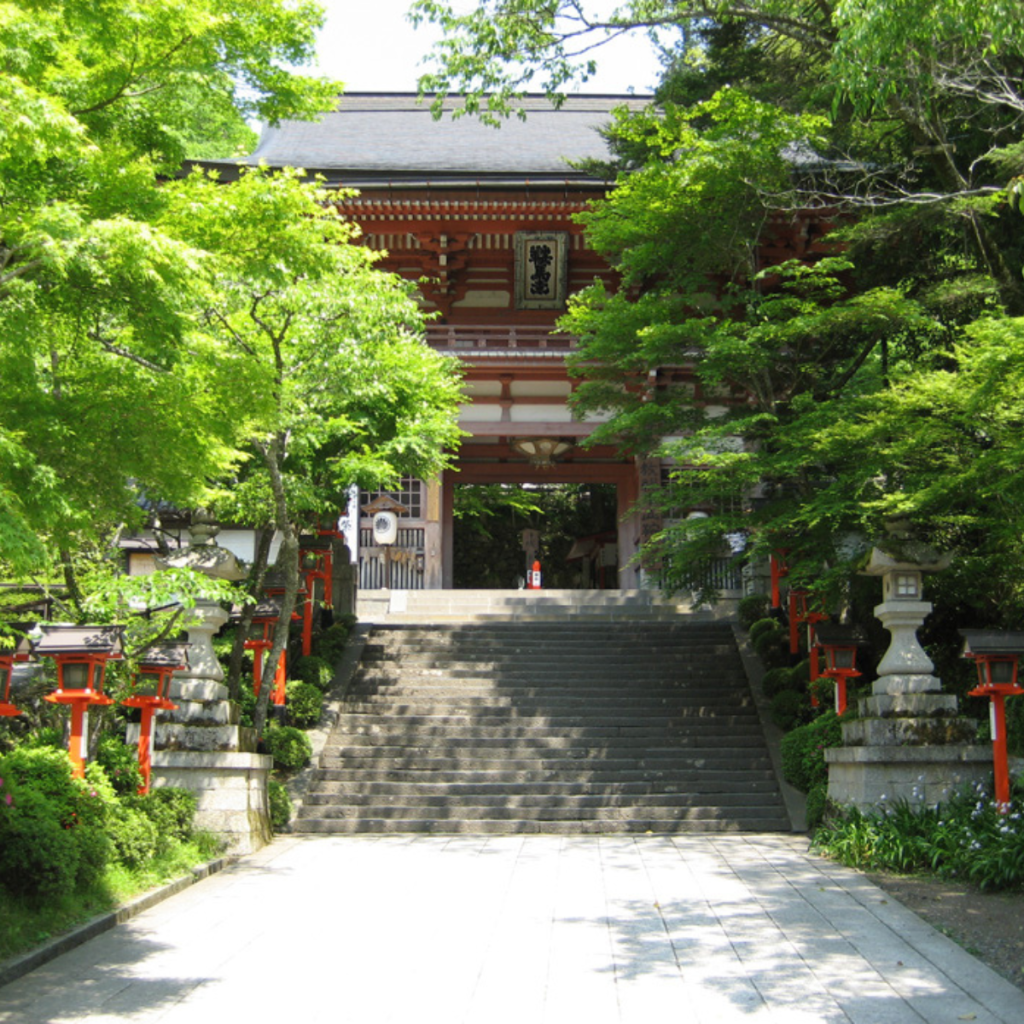
Date: September 15th, 2023
Honoring an Iconic Figure in Japanese History
On September 15th, the tranquil mountain temple Kurama-dera in Kyoto, Japan, comes alive as it celebrates the life of an iconic warrior, Minamoto Yoshitsune, during their annual Yoshitsune-sai festival. Known for his military prowess and fascinating life story that is entwined with tengu (Japanese mythical beings), Yoshitsune has remained an ever-popular figure in Japanese culture, inspiring countless tales and legends about his exploits.
Born in 1159, Minamoto Yoshitsune was a victim of political strife at a tender age when his father was assassinated by the Taira clan. Seeking refuge and revenge against the Taira clan that destroyed his family, Yoshitsune eventually joined forces with his estranged brother, Yoritomo, along with his trusted vassal and famous warrior monk Benkei. Despite facing betrayal from the Fujiwara clan, which led to his tragic demise alongside his family members, Yoshitsune’s legend lives on through various art forms and events such as the Yoshitsune-sai festival.
Celebrating Martial Arts and Spiritual Offerings at Kurama-dera
The main hall of Kurama-dera Temple bustles with activity during the festivities as incense fills the air and sutras are chanted in unison. Devotees line up to pay their respects to a special portrait of Minamoto Yoshitsune symbolically watching over them.
A prime attraction at the festival is a martial arts demonstration featuring aikidō, performed by skilled practitioners on the main temple hall steps. This display echoes Yoshitsune’s legendary combat skills developed during his years spent at Kurama-dera’s mountain sanctuary. Enthusiasts of martial arts, history, and Japanese culture are bound to find this experience enthralling.
Another highlight of Yoshitsune-sai is a traditional dance performance as an offering to the memory of Yoshitsune, featuring tengu adorned with intricate masks. Music fills the atmosphere during this unique spectacle which pays homage to the mythical beings that Yoshitsune is believed to have trained with. Occasionally, the dance is replaced with another expression of respect for the revered warrior.
The Journey to Kurama-dera Temple: A Walk Through History
Yoshitsune-sai offers visitors an unforgettable trip along the winding path up to Kurama-dera, inviting them to traverse a landscape steeped in history and beauty. Amidst the serene natural setting and enchanting temple structures, one can almost envision a young Minamoto Yoshitsune perfecting his martial prowess in preparation for revenge against the Taira clan.
For those looking to immerse themselves in Japanese history while experiencing a peaceful and authentic festival, Yoshitsune-sai at Kurama-dera is a highly recommended event.
Hagi Matsuri
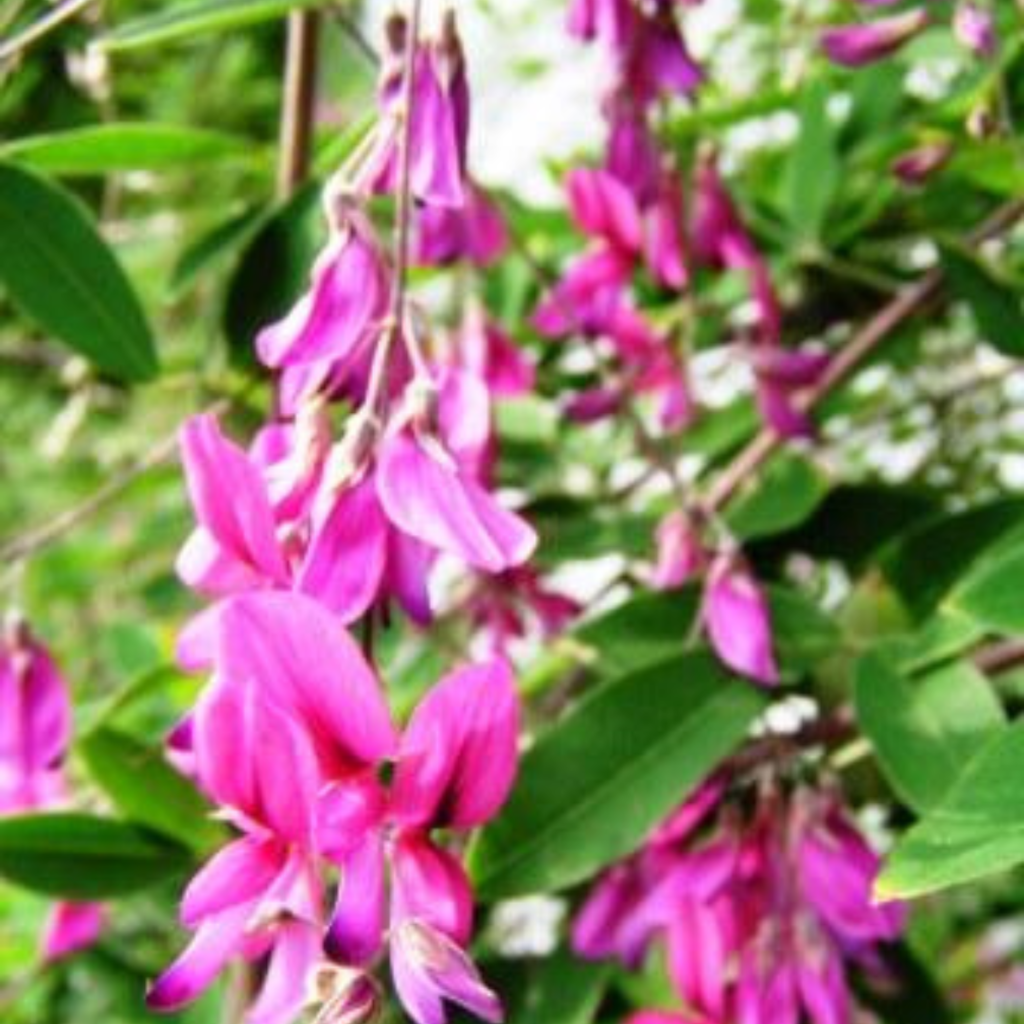
Date: September 16th – 18th, 2023
As autumn unfolds in Japan during mid-September, the Hagi Matsuri presents itself as a vibrant display of nature and culture. Celebrating the beautiful bloom of hagi (bush clover), this festival offers attendees a unique blend of traditional Japanese arts and enchanting fall plants.
Nashinoki Shrine’s Bush Clover Festival
Located near the Kyoto Imperial Palace, Nashinoki Shrine hosts an annual Bush Clover Festival dedicated to showcasing the hagi blooms. During this festival, worshipers often write poetry on pieces of paper before tying them to the bush clover plants that adorn the shrine grounds.
Moreover, a haiku society gathers at the shrine before the main festivities for a creative session. The primary attractions, however, commence over the next four days, featuring an array of performances on stage.
A Wide Range of Cultural Performances
The Hagi Matsuri at Nashinoki Shrine encompasses a diverse set of art forms presented on stage. Among them are ikebana flower arrangement, solo dance performances from various female dance schools, Ōkura style kyōgen—a comedic theater form, bugaku (court-style dance), musical pieces performed on shakuhachi flute and koto, as well as kyūdō archery demonstrations.
It’s essential to note that the performance offerings change from year to year, with schedules released closer to the festival date.
Mukojima-Hyakkaen Gardens’ Hagi Festival
Another significant venue for experiencing the Hagi Matsuri is the elegant Mukojima-Hyakkaen Gardens—a nationally-recognized scenic and historic park in Tokyo. Established during the Edo period (1803-1867) by an antiques merchant named Kiku Sahara, these gardens have become home to a stunning variety of flowers that bloom all year round.
A Tunnel of Hagi Blooms
Upon entering the Mukojima-Hyakkaen Gardens during the Hagi Matsuri, visitors are greeted with a long tunnel of bush clover grown on a 30-meter-long bamboo frame.
In addition to hagi, attendees can admire six other flowers of autumn, including balloon flower, large pink dianthus (nadeshiko), kudzu vine, Japanese silver grass, golden lace, and thoroughwort—collectively known as Aki no nanakusa (seven wildflowers of fall).
Embracing Autumn Tradition at Hagi Matsuri
The Hagi Matsuri offers a rare opportunity for visitors to immerse themselves in Japan’s cultural heritage and appreciate the nation’s natural beauty. Whether at Nashinoki Shrine or Mukojima-Hyakkaen Gardens, this festival’s striking combination of autumn flowers and traditional performances promises to leave a lasting impression on its attendees.
Kamigyō Takigi Nō
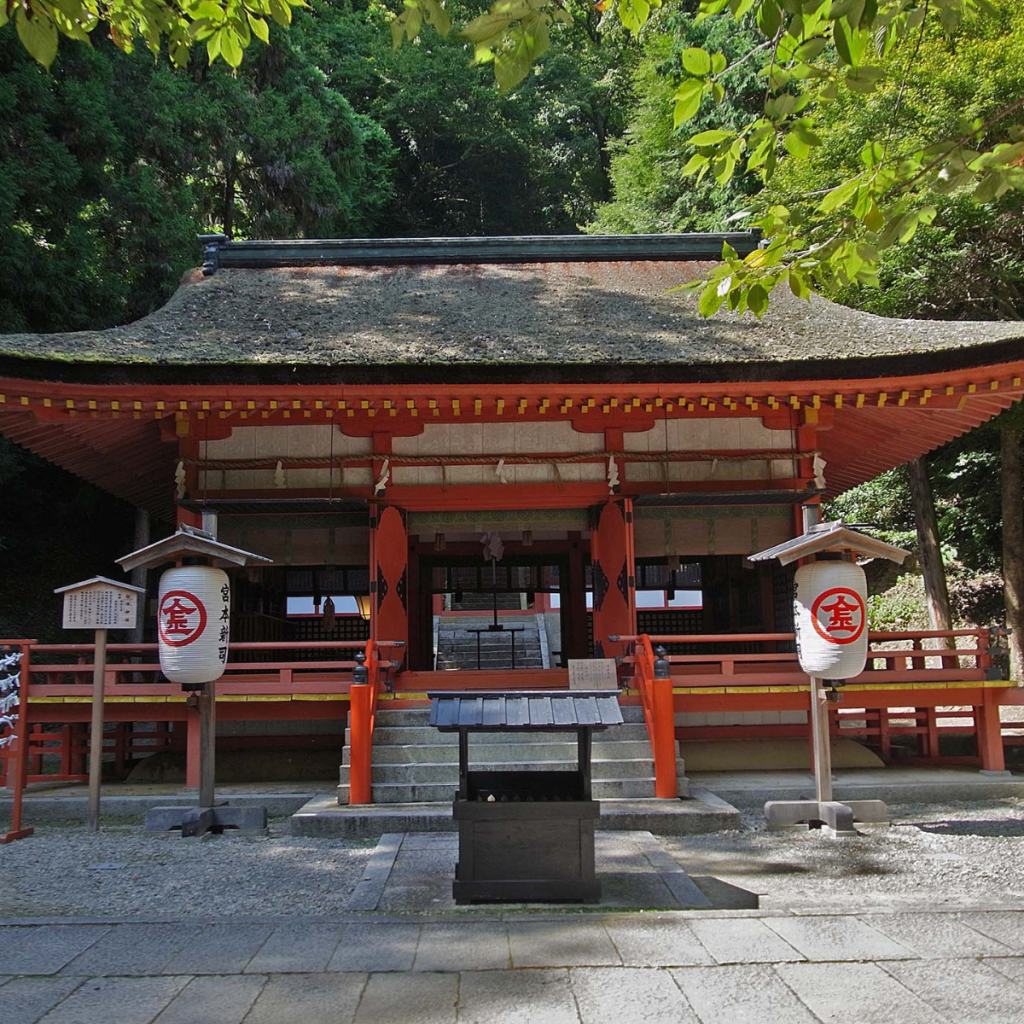
Date: September 21st, 2023
Nō: A Time-Honored Art Form
Nō, which traces its history back to the 14th century, is the oldest form of Japanese theatre and a highly revered art form. With supernatural themes involving gods, demons, and tormented ghosts, the performances feature intricate elements such as carved wooden masks, elaborate costumes, chanting, and graceful movements.
This unique art form often intertwines various schools and families to uphold traditional nō theatre. In addition to private performances, nō is usually showcased during religious ceremonies as an offering to the gods.
The Allure of Takigi Nō
The Annual Kamigyō Takigi Nō performance is held at the historic Shiramine Shrine in Kyoto’s Kamigyō Ward. The event presents a captivating open-air firelight nō (takigi nō) performance that takes place on a lit stage throughout an entire evening. Audiences can expect an array of traditional artists from different nō schools along with kyōgen troupes, hōbu dancers, koto players, and musicians working together for hours of enchanting entertainment.
Beginning around 4 pm and lasting several hours with an interval in-between acts, this annual event offers participants a rare opportunity to enjoy various traditional Japanese performing arts rendered by masters of various skill levels.
Shiramine Shrine’s Connection to Sports
Shiramine Shrine has earned an outstanding reputation as a shrine for sports due in large part to being home to Seidai Myōjin—a god associated with athletic prowess. Famed athletes in Japan often visit Shiramine Shrine seeking victory in their endeavors or expressing gratitude for their successes through donations like game balls.
The ancient Heian Period ball sport known as kemari is also frequently played at the shrine. Interestingly, Emperor Sutoku and Emperor Jūnin, both of whom died in exile, are also enshrined at Shiramine Shrine.
Experience Nō by Night in September
For those captivated by Japan’s rich history and cultural heritage, the Kamigyō Takigi Nō event at Shiramine Shrine is a must-attend. Immerse yourself in an evening illuminated by firelight and experience the fascinating world of nō theatre amid a unique and supernatural ambiance. Plan your visit this September for a truly unforgettable experience.
Kushi Matsuri -The Japanese Comb Festival
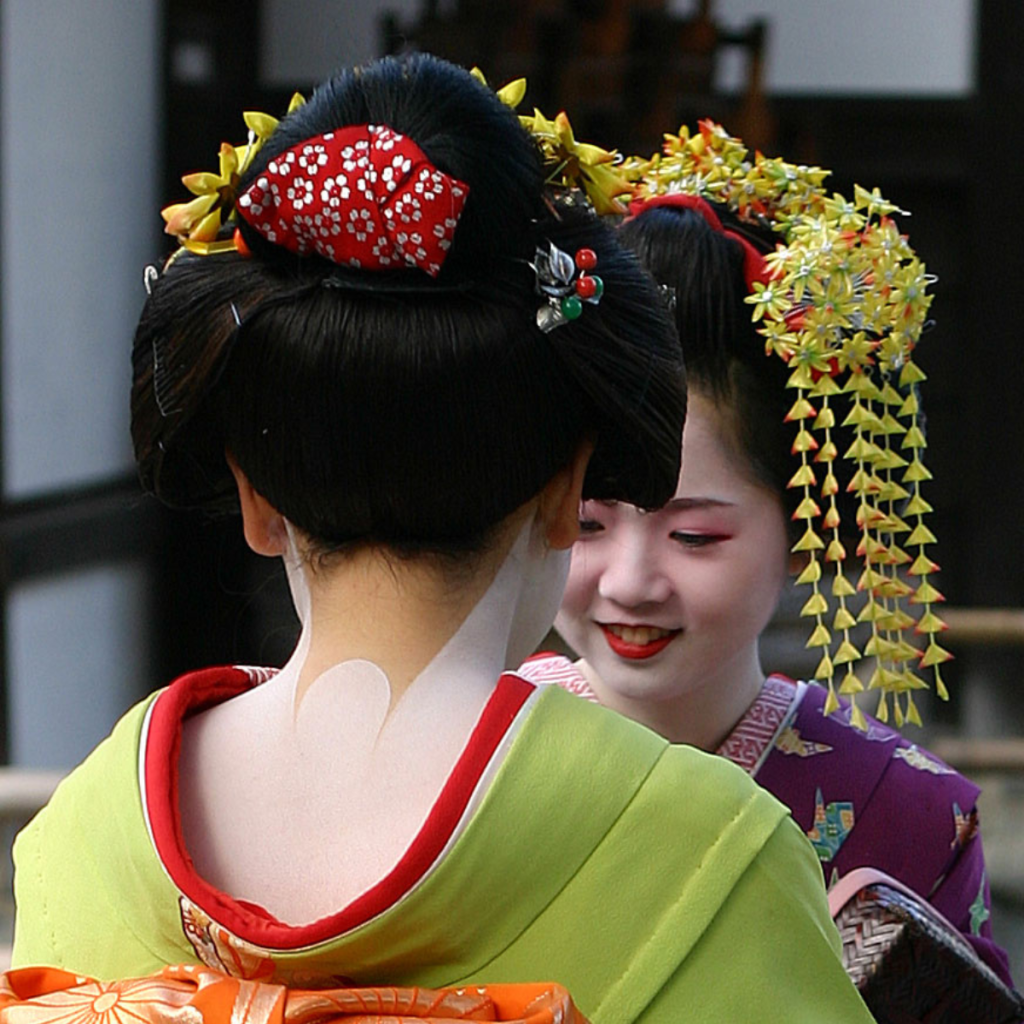
Date: September 25th, 2023
The Historical Background of Yasui Konpiragū Shrine
A significant event in Kyoto’s cultural calendar, Kushi Matsuri, or Comb Festival, has its roots in the city’s Yasui Konpiragū Shrine. Established in the late 600s, this small shrine is located in the renowned Gion area and was originally dedicated to the Fujiwara clan. Over centuries, the shrine underwent several transformations and faced destruction on multiple occasions.
Rebuilt in 1695, today’s Yasui Konpiragū Shrine venerates Minamoto no Yorimasa, a poet warrior, Emperor Sutoku who lived in exile, and Ōmononushi no Kami, a serpentine water god. A fascinating legend surrounds Ōmononushi no Kami where he is believed to have taken the form of a snake hiding within a woman’s comb case.
The Significance of the Comb Burial Mound (Kushizuka)
The story of Ōmononushi no Kami culminated in the establishment of a burial mound for combs known as kushizuka. Constructed on the shrine grounds in September 1961, kushizuka is an honorary site for used combs and hair ornaments that were once vital to local women’s beauty routines. Instead of treating them like ordinary trash, devotees began repurposing these items to pay tribute.
With support from Kyoto Beauty Culture Club, since 1961 Yasui Konpiragū Shrine has been hosting Kushi Matsuri every September as an expression of gratitude towards these treasured objects.
Kushi Matsuri: A Parade of Revived Hairstyles
The Kushi Matsuri commences at 1 pm with an opening ceremony held near the kushizuka. As part of this reputable event, the priest talks about the significance of the ritual while new combs are added to the burial mound. A special dance performance called “Kurokami” (“Black Hair”) is delivered by a dancer dressed as a maiko in front of the shrine’s main hall.
Following the initial ceremonial proceedings, women participating in the festival embark on a procession around the Gion district. The highlight of Kushi Matsuri lies in the parade, where attendees don a variety of hairstyles and ornaments from different historical periods in Japan, ranging from the Kofun Period to contemporary styles.
Volunteers diligently carry signs indicating the specific era being represented by each hairstyle on display, ensuring that participants can appreciate the rich history behind them. The Kyoto Beauty Culture Club members work meticulously to recreate these elaborate hairstyles using only natural hair, while attendees flock to witness their masterful creations coming alive in this visually stunning event.
Meigetsu Kangen-sai
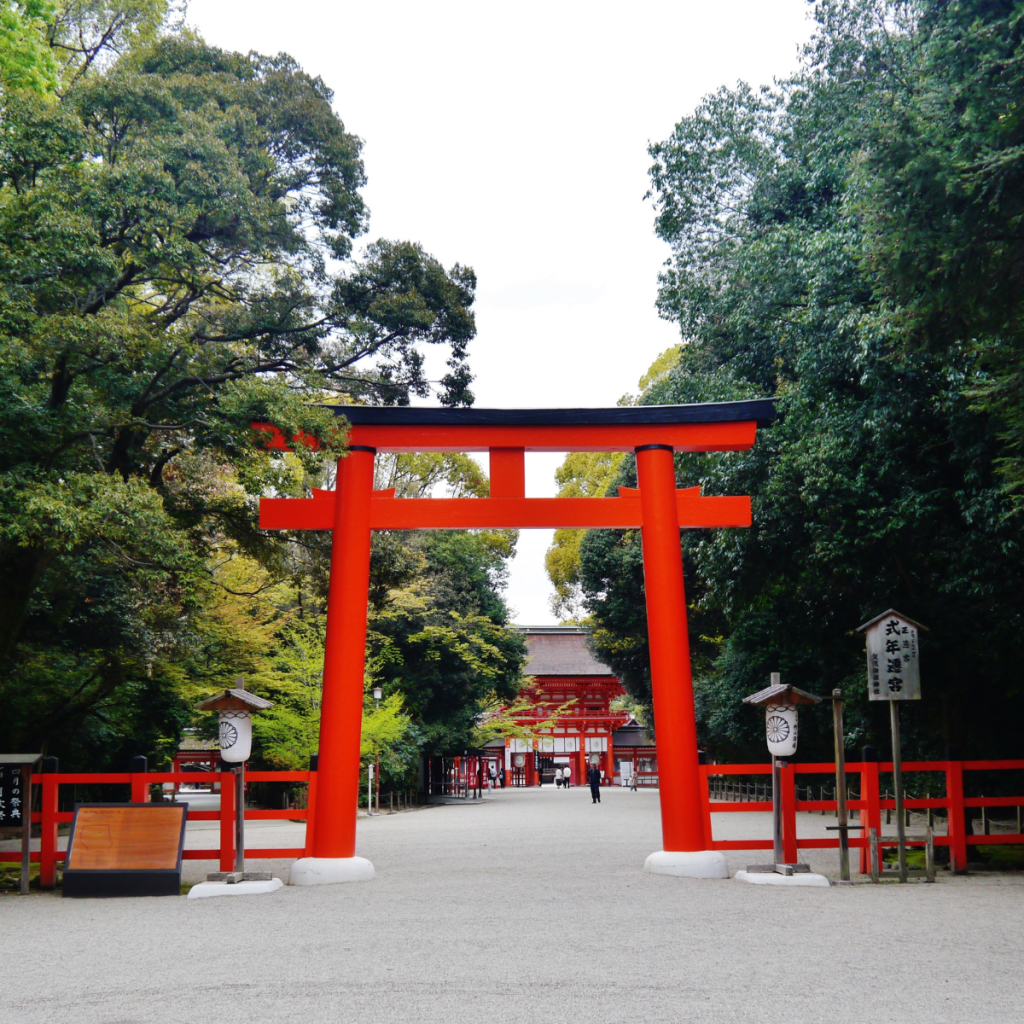
Date: September 29th, 2023
A Time-Honoured Japanese Tradition
The Meigetsu Kangen-sai festival is a centuries-old tradition held on the night of the harvest moon at the UNESCO World Heritage Site, Shimogamo Shrine. Located in Kyoto, the shrine dates back to the 6th century and hosts various events throughout the year, including the Aoi Matsuri Festival.
Meigetsu Kangen-sai showcases Japan’s rich moon-viewing culture that has been preserved for over a thousand years. In honor of this tradition, visitors can attend elegant tea ceremonies, savor traditional Japanese desserts, and relish musical performances by firelight as the moon rises.
Shinto Rituals and Prayers
Before the festivities begin, a Shinto ritual is conducted at the shrine’s main hall. Participants dedicate prayers and offerings to deities in accordance with ancient customs. The ritual usually concludes around 17:30, after which visitors can make their way to Hashi-dono hall for the captivating performances of Meigetsu Kangen-sai.
With limited bench seating available in front of Hashi-dono hall, early arrival ensures a great spot to enjoy this enchanting event up close.
Gagaku Music and Bugaku Dance Performances
Each year’s Meigetsu Kangen-sai lineup varies but typically features gagaku court music, bugaku (a dance performed to gagaku music by artists in costumes or masks), and instrumental pieces played on traditional instruments such as the shakuhachi flute, koto harp, and biwa lute.
The stage, adorned with a gold background, autumn pampas grass, and torches flanking both sides, creates a dreamy ambiance under the moonlit sky.
Elegant Tea Ceremony Experience
For an authentic cultural immersion during Meigetsu Kangen-sai, visitors can partake in an elegant tea ceremony held on the shrine grounds, conducted by tea masters in exquisite kimonos. Admission to this event requires purchasing a ticket costing 1,000 yen (approximately $8) or 800 yen (around $7) if purchased in advance.
A Night of Court Dance and Ancient Music
Meigetsu Kangen-sai offers a unique opportunity to witness traditional Japanese court dance for free. While in Japan, attending court dance performances usually requires payment, this festival breaks the norm by offering limited seating at no cost.
As part of the entertainment, the Shimogamo ancient music group graces the stage with their elegance and captivating performance. The lineup extends beyond court dance to include koto – a Japanese harp. Don’t miss the harmony of classical Japanese sounds at Meigetsu Kangen-sai.
Adore the Moon and Savor Japanese Desserts
If weather permits on the event night, guests can enjoy breathtaking views of the full moon along with Japanese court dance and music performances. Food vendors adorned along the road leading to Shimogamo Shrine’s entrance offer tempting tastes of long-established Japanese dessert shops.
This year’s Meigetsu Kangen-sai festival promises a magical evening where visitors can immerse themselves in Japan’s timeless moon-viewing traditions while enjoying delightful performances and delicacies.
Seimei Festival
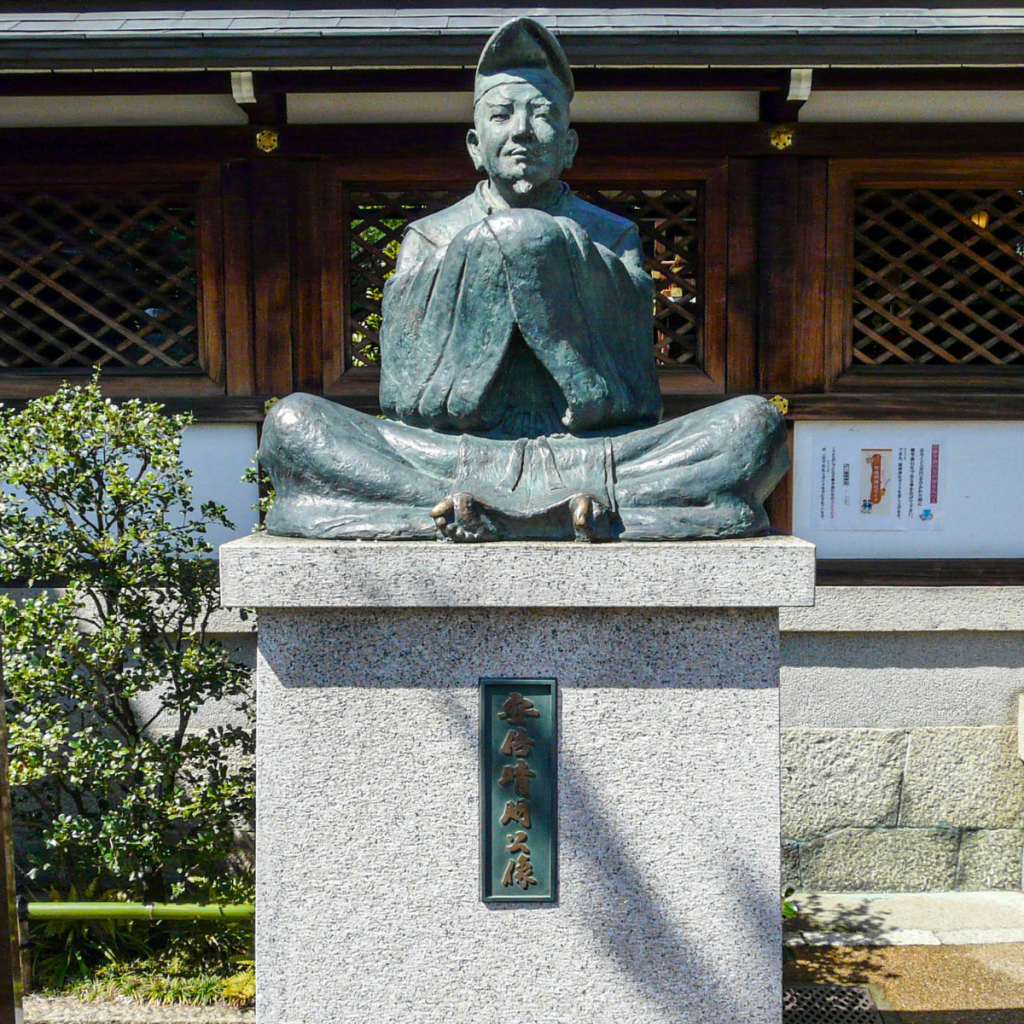
Date: Late September
Enshrining Seimei Abe, the Founder of Onmyoudou
The Seimei Festival pays homage to Seimei Abe, a revered astronomer and Onmyoji (yin-yang sorcerer) during Japan’s Heian period. Known as the founder of Onmyoudou, Abe played a crucial role in establishing rules for calendar construction, annual events, and divination. These practices have become an integral part of daily life even today. Besides his historical significance, Abe’s legacy has been further popularized through his portrayal as the main character in a manga comic book series.
The Most Important Ceremony at Seimei Shrine
Held annually at the Seimei Shrine, the Seimei Festival is considered the most significant event within its yearly calendar. This two-day event attracts visitors from all corners of the country who come to experience its unique rituals and performances.
Day One: Yoimiya Festival and Welcoming Lantern Procession
On the first day of the festival, attendees can witness the Yoimiya festival (eve festival), which features a Mukae Chochin procession with welcoming lanterns. The ceremony concludes with an offering of Yudate Kagura – a boiling water ritual accompanied by sacred music and dance.
- Keywords: Yoimiya festival, Mukae Chochin procession, welcoming lanterns,Yudate Kagura, sacred dance and music
Day Two: Shinko-sai Festival Parade through Local Residential Areas
The second day of the festival showcases the Shinko-sai Festival—a divine visit where it is believed that Abe’s spirit descends upon the shrine. A parade of approximately 500 participants weaves through the town’s residential areas to mark this divine visit. The Shinko-sai Festival not only offers an opportunity for locals and visitors alike to partake in the lively festivities but also serves as a means for them to garner encouragement from the holy spirits.
With its rich historical background, vibrant rituals and performances, the Seimei Festival continues to attract a multitude of visitors every year. As attendees immerse themselves in these time-honored ceremonies, they experience an unforgettable encounter with Japan’s ancient practices and culture.
Stories You Will Also Like
7 Reasons Why Seven Hours Of Sleep In Japan Feels Better Than In America—Here’s What’s Different
GOP’s $170 Billion Border Blowout: A Historic Surge in Immigration Enforcement Funding
Dinii Introduces Tipping in Tip-Free Japan, Sparking Cultural Debate